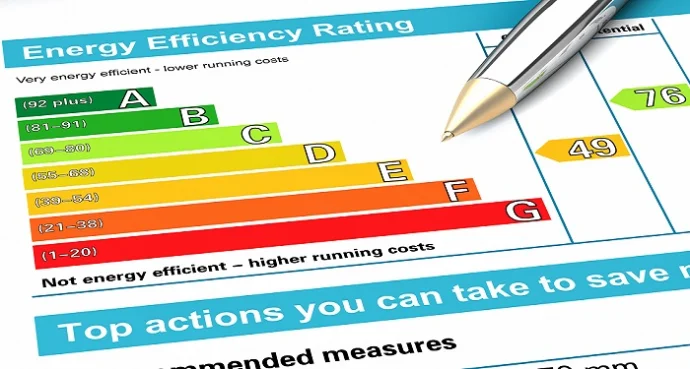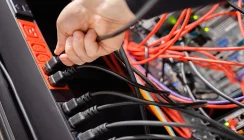The Energy Efficiency Audit Process
Energy efficiency is one of the most critical aspects of any datacentre or server room environment to monitor and control. The reason for this is the rising cost of energy within the UK and for large-scale users the amount of money any electricity usage drains from operating budgets.
It is important when carrying out an energy efficiency survey for a client to understand their energy usage profile to help them to reduce their overall electricity usage. There many solutions that can be implemented following an energy efficiency audit. These can range from simple improvements (what we can ‘low hanging fruit’) to larger and more extensive capital projects and education programs.
Capital projects can include investments in the latest energy efficient products and an example here would be to upgrade from an old transformer based UPS system to a modular high efficiency transformer less uninterruptible power supply. Here improvements in energy efficiency from 70% to 95% between the old and new UPS systems can lead to dramatic energy efficiency ratio improvements.
Energy Usage
Efficiency is a ratio (normally expressed as a percentage) of the total energy put into a process and the workload achieved. In a datacentre or building housing a server room, we are principally concerned with electricity usage rather than any other form of energy such as natural gas.
The electricity supplied to a building is measured using electricity meters at the building incomer. This is the point of connection between the building and the local electrical supply from the National Grid. The electricity meters provide the local District Network Operator (DNO) with information on electricity usage which is measured in kilowatt-hours (kWh) and charged to the building occupants at a set daily and night time rate. If the building is leased out or with rented out space (such as for a co-location datacentre) a relevant part of the kWh electricity charges may be passed onto the tenants. In this case of a colo datacentre the tenant could be server rack or data hall user.
Datacentre Energy Usage Metrics
In the datacentre industry Power Usage Effectiveness (PUE) has become an industry de facto energy usage metric and way for datacentres, whether enterprise or colocation to benchmark themselves. Developed by the Green Grid to help identify and promote energy efficiency improvements.
The formula provides a ratio of the Total Facility Energy divided by that used by the IT load. The nearer the figure us to Unity (1), the more efficient the datacentre or server room. Many of the leading mega-datacentres have invested and built their datacentre facilities to use the latest high efficiency systems whether its cooling or power and achieve a PUE close to 1. Normally operation is from 1.5 upwards. A similar energy efficiency metric is DCIE of which PUE is the inverse calculation.
Improving energy efficiency does not only lower operating costs but also reduces CO² and carbon footprints enabling and organisation to meet both its financial budget and environmental targets.
Energy Efficiency Consultants
At Server Room Environments our energy consultants are CDCEP trained and certified. This means that they have successfully complete C-NET training courses to become Certified Data Centre Energy Professionals.
Not only can a CDCEP professional provide guidance on how to improve energy efficiency. They can help to develop an improved energy efficiency strategy and program for the longer term future of an organisation. A CDCEP certified expert is trained to strategically plan, design and implement an Energy Plan focused on energy efficiency. The process involves an audit, profile tools and models for any site data collected and the development of a comprehensive action plan.
IT and Server Room Efficiency
Electricity is used to power and cool every component within a server environment. How the power is distributed and deliver to the networking and IT equipment governs energy efficiency. The first task is to identify how much electricity and power is being drawn, used and wasted.
This can involve both desktop surveys and on-site monitoring. As part of a future energy plan it is important to install continuous energy monitoring. This will help to quickly identify where energy wastage occurs through a drop in efficiency or the monitoring for example of usage and ‘hot-spots’. Heat and noise are two of the principle signs of poor energy efficiency. The Laws of Thermodynamics quote that ‘energy can neither be created or destroyed; energy
Relevant standards when reviewing energy efficiency include BS EN 50600 (Information technology. Data centre facilities and infrastructures) and TIA 942-A (Telecommunications Infrastructure Standard for Data Centers). In the UK BS EN 50001; the Energy Management standard for buildings can also be relevant and reaches infrastructures outside the IT space and refers to the building and organisation.
Desktop Surveys
Desk research is the first stage for any energy efficiency improvement audit and is based around analysing current electricity bills. Copies are requested from clients or their local DNO on a client’s behalf to assess overall usage and electricity rate charges. As well as kWh charges, the electricity bills may also show reactive power charges (kVAR) and identify peak usage periods. Contacting the local DNO can also allow our project managers to discuss any specific power problems known within the local area (power problem pollution) and previous interruptions in supply (mains power failures or power cuts).
Field Surveys
When our energy efficiency experts visit site, they will carry out a walk-through with a check list covering specific areas of the datacentre facility including electrical and uninterruptible power supply arrangements, cooling and server rack configurations, lighting, heating in office areas and overall energy management approaches including monitoring systems.
If necessary energy temporary energy monitoring devices and data loggers may be connected at the building LV incomer to measure the energy drawn and at key distribution and sub-distribution panels through-out the building. The monitoring period is typically for a 24-hour period over a 7-days or longer depending on the time of year and work profile of the site.
The data from the desktop and field surveys and monitoring is then analysed to generate an Energy Improvement Action Plan. This can result in several outcomes and actions including short, medium and long-term. The action plan could include several areas for improvement including:
- Training and education programs for relevant staff members
- Quick fixes including blanking plates for server racks and correctly fitting floor tiles
- The installation of voltage optimisers in areas of high mains voltages and power factor correction systems where reactive power kVAR charges are being made
- Upgrading legacy systems to the latest high efficiency UPS and cooling technologies
- The upgrade of existing legacy UPS systems to the latest high efficiency systems
- Load redistribution to achieve an optimised and balanced electrical profile
- The adoption of a zone-controlled approach for temperature and energy usage
- Changes to processes, procedures and practices on-site including operating times and threshold setting for heating and cooling systems
- Smart metering and data logging installation and the use of intelligent PDUs with socket metering and control capabilities and network integration (DCIM)
- Investment in renewable energy sources including local power generation and energy storage using lithium-ion batteries
- Sourcing electricity from lower cost suppliers
An energy efficiency audit can lead to several outcomes and some may be unexpected. Whilst new build sites can typically achieve a high operating efficiency level from day-one, existing sites can generally experience a greater improvement and cost reductions and especially where they are running older power and cooling and IT systems.

























